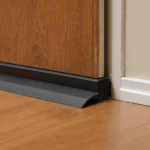When aiming to enhance your home’s heating efficiency, one of the most impactful steps is evaluating and optimizing your home’s insulation. Proper insulation not only helps maintain desired temperatures but significantly reduces energy waste, resulting in lower heating costs. Poor insulation is often the culprit in energy inefficiency, allowing precious warmth to escape and cold air to seep in.
Start your evaluation by conducting a thorough inspection of all the potential areas where heat might be lost. Your ceilings, walls, floors, and attic are prime locations for checking insulation quality. It’s crucial to identify whether existing insulation has settled, deteriorated, or been improperly installed.
Begin with the attic, as a substantial amount of heat typically escapes through the top of your home. Look for signs of gaps, inadequate coverage, and compression of the insulation material. Utilize a flashlight and a measuring tape to ensure insulation depth aligns with recommended values; usually, an R-value of 30 to 60 is advised, depending on your region.
To accurately assess wall insulation, you might consider seeking professional assistance since this often requires advanced tools like thermal imaging cameras or inspection probes to see inside walls without causing damage.
Don’t overlook the importance of inspecting crawl spaces and basement ceilings, as these areas also play significant roles in maintaining a balanced internal climate. A vapor barrier should be in place to prevent moisture from compromising the insulation.
When reviewing your home, you might find it helpful to utilize a table to compare different insulation materials based on particular criteria:
| Material | R-Value Per Inch | Durability | Cost |
| Fiberglass | 2.9 to 3.8 | Moderate | Low |
| Spray Foam | 3.5 to 6.5 | High | High |
| Cellulose | 3.1 to 3.8 | Moderate | Medium |
| Rigid Foam | 3.8 to 5.0 | High | Medium |
Your decision on insulation should factor in not just the thermal resistance provided by different materials (i.e., their R-value) but also cost considerations and the environmental impact. For instance, spray foam tends to offer high R-values and excellent durability but generally comes with a higher upfront cost and environmental footprint. Conversely, cellulose is often praised for its eco-friendliness and adequate performance.
Proper insulation evaluation and upgrades can significantly impact your thermal efficiency, allowing for cost-effective heating. Investing time and resources in assessing and enhancing your home’s insulation can lead to significant savings, increased comfort, and a more environmentally closed system, reducing your overall ecological footprint.
Choosing the right heating system
Choosing the right heating system for your home is another crucial factor in improving overall heating efficiency. With numerous options available, it’s essential to carefully evaluate each system’s performance, cost, installation requirements, and long-term benefits. Here are some strategic steps to guide you through selecting the optimal heating solution for your needs:
1. Assess Your Heating Needs:
– Consider the size and layout of your home. Larger homes or those with multiple stories might require a more robust or zoned heating system.
– Take into account your local climate. Homes in colder regions might benefit from systems designed for greater efficiency in extreme temperatures.
– Evaluate your current system’s performance to identify gaps or areas of improvement.
2. Explore Different Types of Heating Systems:
– Furnaces: Typically powered by natural gas, oil, or electricity, furnaces are known for their reliability and efficiency, especially for whole-home heating. Consider models with high Annual Fuel Utilization Efficiency (AFUE) ratings.
– Heat Pumps: These systems transfer heat from outside air or the ground into your home and can be effective in moderate climates. They offer dual functionality by providing both heating and cooling.
– Boilers: Ideal for homes with radiators, boilers heat water which then radiates warmth. They can be gas, oil, or electric-powered and are efficient for consistent and comfortable heat.
– Radiant Heating: Provides heat directly to the floor or panels in the wall or ceiling, offering an even distribution of warmth without the need for air circulation.
3. Evaluate Energy Efficiency:
– Opt for ENERGY STAR-rated systems to ensure high efficiency and lower operational costs.
– Compare systems based on their Energy Factor (EF) or Coefficient of Performance (COP) for heat pumps, to determine the energy consumed relative to the heat produced.
– Consider systems with a programmable or smart thermostat compatibility to enhance energy-saving capability.
4. Consider Installation and Maintenance Costs:
– Account for both the initial installation expenses and the long-term maintenance costs. Some systems might be cheaper to install but could incur higher costs over their lifespan.
– Ensure that you have access to professional service providers for installation, regular maintenance, and repairs.
5. Environmental Impact:
– Choose systems with a lower carbon footprint. Electric heat pumps, for instance, are generally more environmentally friendly compared to traditional gas or oil systems.
– Evaluate the potential for integrating renewable energy sources, such as solar panels, to further reduce environmental impact.
6. Consult with Professionals:
– Engage with HVAC professionals to conduct a load calculation of your home. This assessment helps determine the correct size and capacity of the system required for optimal efficiency.
– Seek recommendations based on your specific needs, lifestyle, and budget constraints.
By following these steps, you can ensure that you select a heating system that not only meets your specific requirements but also enhances your home’s energy efficiency. Investing in the right heating system not only decreases utility costs but also contributes to a more comfortable and sustainable living environment.
Utilizing smart thermostats
The integration of smart thermostats into your home heating system has emerged as a highly effective strategy for boosting heating efficiency. These advanced devices bring a level of precision and control that traditional thermostats simply cannot match. By learning your daily routines and preferences, smart thermostats adjust the temperature of your home automatically, ensuring comfort while optimizing energy use.
One of the primary benefits is their ability to create customized heating schedules. Once you input your desired temperatures for different times of the day, the thermostat takes over, adjusting the heat to fit your personal schedule. If your routine changes, many smart thermostats are intuitive enough to adapt seamlessly without needing manual adjustments. This translates to savings on your energy bill, as the heating is only active when needed.
Moreover, smart thermostats offer intuitive remote access, allowing you to control your home’s heating from anywhere via a smartphone app. Whether you’re away on vacation or just leaving work, you can increase or decrease the temperature to ensure your home is at the perfect level upon your arrival. This remote capability not only enhances convenience but provides a unique opportunity for real-time energy management.
Another compelling feature is the energy usage analytics that many smart thermostats offer. By providing detailed reports on your heating patterns and energy consumption, these devices enable you to identify inefficiencies and make informed decisions. Through these insights, you can recognize patterns of overuse and take steps to adjust your habits accordingly.
Smart thermostats often include geofencing technology, which uses your phone’s location to determine when you leave and return home, adjusting the temperature automatically. This feature enhances energy savings by ensuring that your heating system doesn’t work unnecessarily when the house is empty, while ensuring comfort as you walk through the door.
Integration with other smart home systems is another advantage of smart thermostats. They can often be synced with other devices such as smart lights, security systems, and virtual assistants like Alexa or Google Assistant, creating a comprehensive smart home ecosystem. This interconnectedness provides enhanced control over your living environment, ultimately contributing to greater efficiency and convenience.
Finally, opting for a smart thermostat also means enjoying ongoing updates and improvements. Manufacturers of these devices frequently release software updates that enhance functionality or security, ensuring your system continues to meet evolving technology standards without the need for expensive replacements.
In summary, installing a smart thermostat is a practical step towards achieving significant energy savings. By allowing tailored control of your heating system, offering remote access, and providing valuable usage insights, smart thermostats contribute to both reduced utility bills and a more sustainable home heating strategy. Their ability to integrate seamlessly into a larger smart home environment further amplifies their efficiency, making them a wise investment for any homeowner looking to enhance their home’s energy efficiency.
Regular maintenance and upkeep
Regular maintenance and upkeep of your heating system is vital for ensuring its longevity and operational efficiency. Consistent care not only prevents potential breakdowns but also helps the system run at peak performance, which is crucial for minimizing energy consumption and reducing home heating costs.
Begin with routine checks that you can easily do yourself, such as replacing or cleaning air filters. Dirty filters restrict airflow, which forces the system to work harder and consume more energy, leading to higher utility bills. Experts recommend inspecting filters monthly, especially during the heating season, and replacing them every one to three months or according to the manufacturer’s guidelines.
Make a habit of inspecting the external vents and ducts as well. Ensure that vents are not blocked by furniture, curtains, or other household items. Blocked vents can hinder heat distribution throughout the house, causing the system to run longer to maintain the desired temperature. Similarly, examine ductwork for signs of leaks or disconnections, as even small leaks can significantly degrade your system’s efficiency by allowing heated air to escape.
Engaging with professional services for more thorough inspections is highly advisable at least once a year. A qualified HVAC technician can conduct a comprehensive tune-up of your heating system. This service typically involves checking the system’s electrical connections, lubricating moving parts, and verifying the accuracy of the system’s thermostat controls. An annual or biannual professional service is a worthwhile investment to circumvent costly repairs and prolong your system’s lifespan.
During these professional check-ups, it’s important to have the heat exchanger evaluated for any cracks or wear, particularly in older systems. A damaged heat exchanger can pose safety risks such as carbon monoxide leaks, emphasizing the need for regular inspections.
Additionally, if you use a boiler system, ensure that radiators are bled regularly to remove trapped air, which can impede efficient heat circulation. Keep an eye on water pressure gauges for any irregularities and ensure there are no unusual noises coming from the system, which might indicate a problem needing urgent attention.
Another critical aspect of maintenance is keeping the area around the heating unit clear and tidy. Avoid storing items that can restrict airflow or pose a fire hazard. For systems with outdoor components, such as heat pumps, ensure that debris, leaves, and snow are promptly cleared.
Moreover, updating components such as outdated thermostats, worn-out valves, and old insulation around pipes can also contribute to maintaining heating efficiency. Newer parts often incorporate advanced technologies that enhance overall system performance.
Finally, consider keeping detailed records of all maintenance activities and services performed. This documentation can be invaluable for diagnosing future issues, planning for replacements or upgrades, and even adds value when selling your home.
By committing to regular system maintenance and upkeep, you safeguard not only the efficiency of your home heating system but also its safety and reliability. Remember, preventive maintenance today can save a considerable amount of money and stress down the road, making it a fundamental pillar in your strategy to improve home heating efficiency.
Implementing energy-saving practices
Reducing energy consumption in home heating requires adopting practical, everyday habits that contribute to efficiency without sacrificing comfort. A few simple changes in behavior can lead to significant energy savings and make your home more environmentally friendly.
First, consider incorporating strategic use of your window coverings. During colder months, open curtains and blinds on south-facing windows during the day to let in natural warmth from the sun, and close them at night to prevent heat loss. Conversely, ensure that windows and doors are sealed properly to limit drafts – weatherstripping and caulking can provide effective solutions for gaps and leaks.
Wear appropriate clothing indoors during the colder months. Instead of unnecessarily raising the thermostat temperature, dress in layers and use warm blankets, which can significantly reduce your reliance on heating.
Utilizing ceiling and portable fans as a method for distributing heat can also enhance efficiency. Running ceiling fans in reverse can help push warm air that has risen to the ceiling back down into the room, allowing for a more consistent temperature without needing to crank up the heater further.
Additionally, consider setting your water heater to a lower temperature. Most water heaters are set to a default of 140°F, but reducing it to 120°F can be a comfortable and energy-considerate choice without noticeably affecting hot water availability.
Be mindful of space heating. Focus heating efforts in rooms that are being used, and close doors of unused rooms to keep heat concentrated where it is needed most. You might also utilize space heaters judiciously to heat singular spaces instead of the whole house, which can be more energy-efficient for shorter time periods or smaller areas.
Finally, educate your household on energy-saving habits and the role each person plays in collective efforts to improve home heating efficiency. Encouraging everyone to be conscious of their heating habits and to actively participate in energy-saving activities ensures that efforts are sustained and meaningful.
Incorporating these practices will not only contribute to lower utility bills but will also reduce your home’s environmental impact. Making mindful choices about how and when you use heating can lead to a more sustainable lifestyle, and create a comfortable living environment that doesn’t compromise on warmth or your carbon footprint.
In conclusion, optimizing home heating efficiency encompasses a range of choices, from evaluating insulation and selecting the right heating system to leveraging smart technology and regular maintenance. Consistently implementing energy-saving practices completes this comprehensive approach, enabling homeowners to achieve substantial reductions in energy usage. By adopting these strategies, not only can you decrease utility costs, but you also contribute positively toward environmental conservation, ensuring your home remains cozy and sustainable for years to come.


